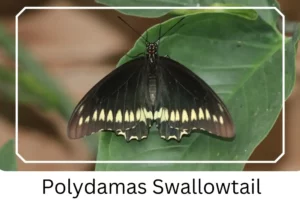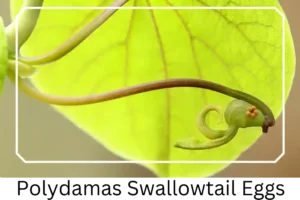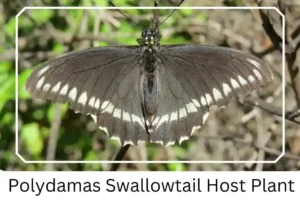Polydamas Swallowtail (Battus polydamas)
The Polydamas Swallowtail, a remarkable species within the diverse ‘swallowtail’ group, captivates enthusiasts and scientists alike. Known for its distinctive appearance and lack of the characteristic tails of its counterparts, this butterfly species boasts a wide distribution and a unique lifecycle. Predominantly black in color, they grace many regions with their presence, particularly noted from April to November, signaling their active periods.
Scientific Classification
- Family: Papilionidae
- Genus: Battus
- Common names: Gold rim swallowtail
- Scientific Name: Battus polydamas
Overview
Belonging to the broader family of swallowtail butterflies, the Polydamas Swallowtail (Battus polydamas) stands out for its tailless design and striking color patterns. With 21 local subspecies, its geographic spread is extensive, ranging from the southern parts of the United States down to Argentina. This adaptability to various habitats underlines its ecological significance and the role it plays in local biodiversity.
Description and Identification
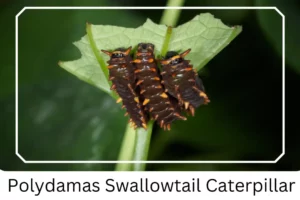 Caterpillar
Caterpillar
The journey of the Polydamas Swallowtail begins as a caterpillar, reaching lengths of up to 5.3 cm (2.1 in). They exhibit a color range from dark brown with vivid orange tubercles to lighter tan shades, showcasing the diversity within the species. Their consumption of egg shells post-emergence and a 19-24 day period through four instars mark significant stages in their development.
Pupa
The chrysalis phase introduces a fascinating aspect of camouflage, with the chrysalis mimicking the colors of dead and new leaves – brown and green, respectively. This adaptation, along with venation patterns, aids in their concealment from predators, lasting approximately 18 days.
Adult Butterfly
Sexual Dimorphism: This species does not exhibit visible sexual dimorphism, making males and females largely indistinguishable by appearance alone.
Color and Appearance: The adult butterflies display a black base color. The dorsal side, when wings are open, features light yellow bands and spots, while the ventral side presents a similar black base adorned with yellow and red spots and lines, visible when the wings are closed.
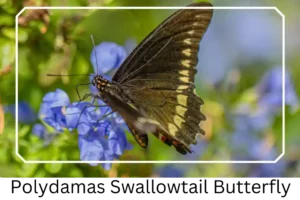
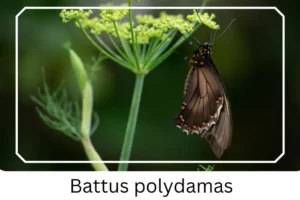 Average Wingspan: Adults boast a wingspan ranging from 9.2 to 11.6 cm (approximately 3.6 to 4.6 inches), showcasing their impressive size.
Average Wingspan: Adults boast a wingspan ranging from 9.2 to 11.6 cm (approximately 3.6 to 4.6 inches), showcasing their impressive size.
Flight Pattern: Their flight is characterized as slow to moderate, a trait that allows for their detailed observation in natural settings.
Quick Facts | |
| Distribution | From south of Texas and peninsular Florida to Argentina, and as far north as Kentucky and Missouri. |
| Habitat | Prefers open woods, abandoned fields, and disturbed areas, showcasing their adaptability. |
| Lifespan of Adults | Adults live up to two weeks, a brief period in which they are highly active. |
| Host Plants | Primarily dependent on Pipevines (Aristolochia species) for larval nutrition. |
| Adult Diet | Favors nectar from Lantana species flowers, also feeding on honeysuckle and soapweed, reflecting their nectarivorous diet. |
How to Identify Polydamas Swallowtail?
Identifying a Polydamas Swallowtail involves noting several key characteristics. Firstly, their unique tailless design distinguishes them from other swallowtails. Observing their coloration is crucial; adults display a distinct black base with light yellow bands and spots on the wings’ dorsal side, and a combination of yellow and red spots on the ventral side when the wings are closed. Additionally, the lack of visible sexual dimorphism means that male and female patterns are consistent, aiding in identification. Their slow to moderate flight pattern allows for closer inspection, making it easier to appreciate their intricate patterns and colors.
Did You Know?
- The Polydamas Swallowtail is also known as the ‘tailless swallowtail’ due to its unique appearance lacking the typical swallowtail extensions.
- This species exhibits remarkable adaptability, thriving in a variety of habitats from disturbed areas to lush open woods.
- The coloration of their chrysalis is a prime example of nature’s camouflage tactics, blending seamlessly with their surroundings to evade predators.
Conclusion
The Polydamas Swallowtail is more than just another butterfly; it’s a testament to the beauty and complexity of nature. From its unique lifecycle and adaptability to its striking appearance, this species embodies the essence of biodiversity. Whether you’re a seasoned entomologist or a casual nature observer, the Polydamas Swallowtail offers a fascinating glimpse into the world of butterflies, highlighting the importance of conservation and the need to protect these delicate creatures and their habitats.
Polydamas Swallowtail Pictures

Scientific Classification

- Family: Papilionidae
- Genus: Battus
- Common names: Gold rim swallowtail
- Scientific Name: Battus polydamas

